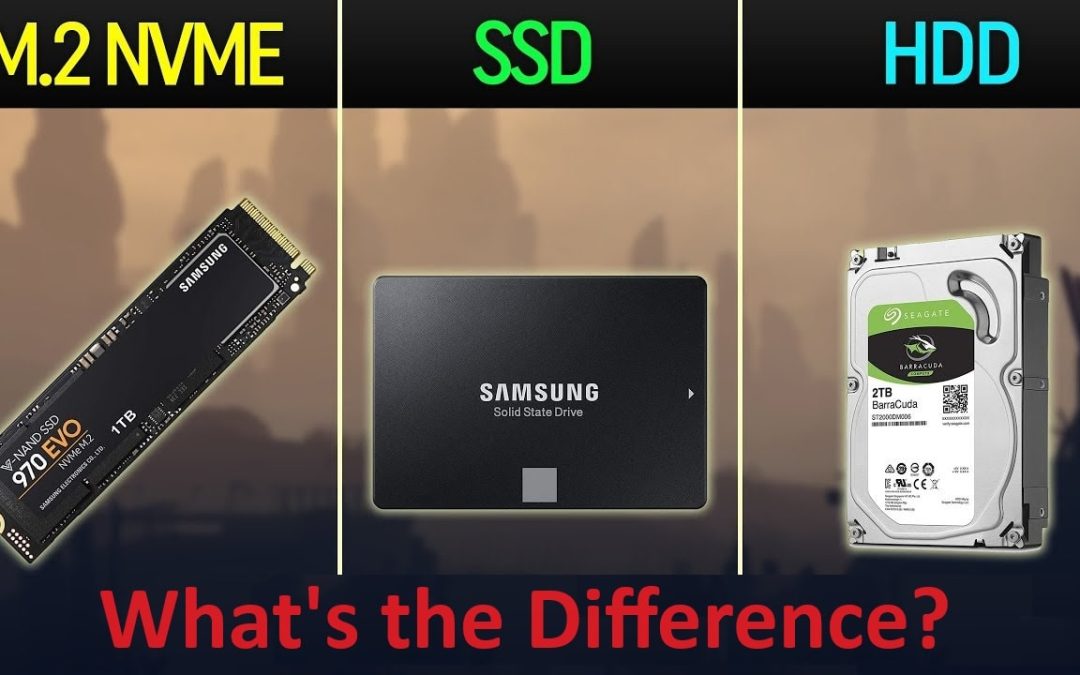In today’s fast-paced digital world, the choice of storage technology can significantly impact your overall computing experience. Solid State Drives (SSDs) have revolutionized the storage landscape, offering remarkable speed and responsiveness compared to traditional Hard Disk Drives (HDDs). Within the realm of SSDs, two main contenders, NVMe (Non-Volatile Memory Express) SSDs and SATA (Serial Advanced Technology Attachment) SSDs, offer distinct advantages. This article will explore the speed, responsiveness, and benefits of these SSDs, as well as why they outshine HDDs.
HDD: A Relic of the Past
HDDs have long been the workhorse of data storage, using spinning platters and mechanical read/write heads to access data. While they offer large storage capacities at an affordable price, their mechanical nature poses limitations. These moving parts lead to slower read and write speeds, ultimately affecting the system’s responsiveness. For tasks like booting your operating system, loading applications, and transferring files, HDDs pale in comparison to SSDs.
SATA SSD: A Significant Leap Forward
SATA SSDs represent a notable advancement in storage technology. They maintain the traditional 2.5-inch form factor of HDDs, making them an easy replacement for older drives in most laptops and desktops. The primary benefit of SATA SSDs is their speed and responsiveness. By replacing HDD’s mechanical components with flash memory, they offer rapid data access and improved durability. This leads to reduced boot times, near-instant application launches, and significantly faster file transfers compared to HDDs. However, their performance is still bound by the SATA interface, which can limit their potential.
NVMe SSD: The Speed Demon
NVMe SSDs are the culmination of storage innovation. They use the NVMe protocol to connect directly to the motherboard through PCIe (Peripheral Component Interconnect Express) slots, bypassing the constraints of SATA connections. The result is a dramatic boost in speed, making NVMe SSDs the fastest storage option available. For tasks that demand rapid data access, such as gaming, video editing, and professional applications, NVMe SSDs shine. Their read and write speeds often exceed those of SATA SSDs by a substantial margin, delivering unparalleled responsiveness.
Comparing Read and Write Speeds
HDDs: HDDs generally offer read speeds in the range of 100-200 MB/s and write speeds of about the same range.
SATA SSDs: SATA SSDs significantly outperform HDDs, with read speeds typically between 500-600 MB/s and write speeds in the same range.
NVMe SSDs: NVMe SSDs are in a league of their own, with read speeds often surpassing 3000 MB/s and write speeds frequently exceeding 2000 MB/s, making them multiple times faster than SATA SSDs. The new 4th Gen NVMe SSD have speeds up to 7000MB/s.
Benefits of SSDs Over HDDs
1. Speed and Responsiveness: SSDs, be it SATA or NVMe, offer significantly faster read and write speeds, resulting in a much more responsive system, with faster boot times and lightning-quick application launches.
2. Durability: SSDs are more durable and shock-resistant than HDDs due to their lack of mechanical parts.
3. Energy Efficiency: SSDs consume less power, which leads to longer battery life in laptops and reduced electricity bills.
4. Silent Operation: SSDs produce no noise as they lack spinning disks and mechanical heads, enhancing the overall user experience.
5. Reliability: The absence of moving parts in SSDs makes them less prone to mechanical failures, enhancing their reliability.
In conclusion, NVMe SSDs and SATA SSDs offer incredible speed, responsiveness, and durability compared to traditional HDDs. While SATA SSDs are a significant upgrade over HDDs, NVMe SSDs set a new standard for speed and performance. The choice between the two SSD types depends on your specific needs and budget. Whether you’re a professional demanding the highest speeds or a casual user looking for improved performance, SSDs are unquestionably superior to HDDs in every aspect.


Recent Comments